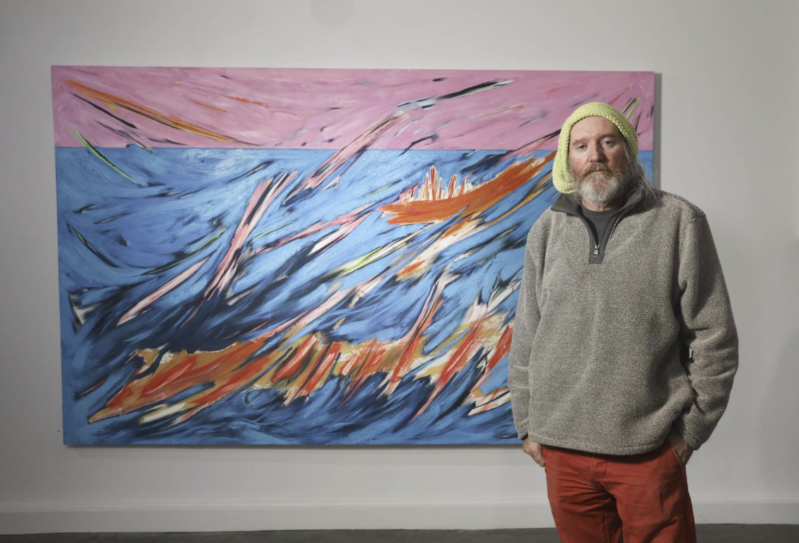
The Trinity Arts Festival (TAF) has made a splash since it has been back on campus. Despite a focus on the performance arts, they have not completely forgotten about the visual aspect. TAF Talks were an essential part of the week-long events because they brought together prominent figures in their respective fields and college students, providing exposure to the behind the scenes aspects of the industry.
In a comprehensive talk by artist Ben Hennessy in the Graduates Memorial Building (GMB), students were able to understand more about the impact of creating art and the manner in which it helps people that are in need. He discussed his experiences working with Syrian refugees in Turkey and the types of experiences that children had when they were able to interact with art. This makes some attempt at answering the broader question of what art is truly for and what purpose it serves.
Hennessy began by giving a brief but significant overview of his own career in the visual arts. His work in abstract expressionism has been shown in galleries around the world as he attempted to use “paint as visceral… [to] make paintings attractive because as an artist you want people to look at it”. The work that he has created constantly responds to the contemporary context, from the fear of a possible third world war to a children’s art competition he judged, his art reflects the connections made between the personal and the public. Several motifs he has consistently explored include the mythological story of Icarus as well as a boat series.
Hennessy specifically focuses on Icarus because he symbolises “chasing dreams despite the dangers”. As Hennessy’s artistic inclinations resulted in being the head of a children’s theater company as well as exploring the broader concept of creativity through a child’s perspective, “creativity as a subject matter” arose as a core focal point for those he taught.
His own work is incredibly bright and loud as it draws the viewer in by using this technique. There are consistent references to the motifs of the ocean, boats, and Icarus, often in the form of solitude. The contrast between the sky and the ocean as well as the boats prompts questions of how different forms contrast to convey different messages. For instance, the boat would generally convey solidarity, however, the manner in which Hennessy paints it win relation to the rest of the setting creates a sense of unity between this man-made creation and the natural environment. The general “visceral” type of engagement is possible because of the
Deeply moved by the more recent events of the Syrian refugee crisis, he sought out to contribute in a way that was productive and help those in need. He partnered with TIAFI, a community center in Turkey for Syrian refugee women and children that aims to distribute meals, coordinate sponsorship from abroad, and provide basic necessities. Within this community center, very few children had the opportunity to engage with the arts, however, Hennessy sought to rectify this. By giving children the opportunity to paint, draw and contribute to a broader art piece the community was able to bond and use art to heal. Laughter filled the air once a colored grid had been painted on the floor to facilitate games such as hopscotch. This sort of laughter allows families to repair ever so slowly and find a bit of happiness.






